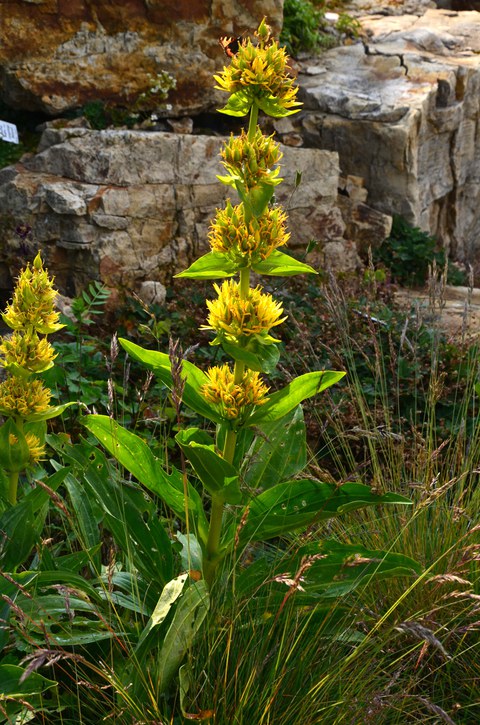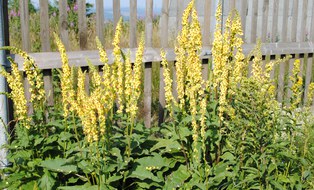The Fichtelberggarten
Table of contents
History
At 1214 meters, the Fichtelberg near Oberwiesenthal is the highest mountain in Saxony. In 1917, Oskar Drude established a stone garden with alpine plants at a parcel near the meteorological station. Typical species of the mountainous region of the Erzgebirge (Ore Mountains) augmented the collection. Due to an expansion of the meteorological station in 2006, the garden was moved to its present location, where it covers about 200 square meters.
Aims
The Fichtelberggarten aims to enrich the diversity of plants available for research and education. The rough and wet climate offers good conditions for alpine species that cannot be cultivated permanently in Dresden. Moreover, the garden presents the rich local flora to visitors of the touristic region of the Ore Mountains.
Tour

Gentiana lutea
The front part of the garden displays typical species from local mountain meadows. Meadowsweet (Filipendula ulmaria) and Spignel (Meum athamanticum) sway their white flowers next to the pink-blooming Woodland Geranium (Geranium sylvaticum), Rosebay Willowherb (Epilobium angustifolium) and Melancholy Thistle (Cirsium heterophyllum), whereas Mountain Arnica (Arnica montana) adds some yellow eye-catchers to the scenery.
Examples of forest edge species can be found to the right of the path, e. g. the white-blooming Ranunculus platanifolius and Columbine Meadow-Rue (Thalictrum aquilegiifolium) or the blue-flowered Alpine Sow-thistle (Cicerbita alpine).
At the back of the garden, gravel plains of limestone and primary rock accommodate selected plant species from the Alps and other European high mountains as well as from the Himalaya.
Contact and location
 © Botanischer Garten Dresden
© Botanischer Garten Dresden
Fichtelberg-Garten
Send encrypted email via the SecureMail portal (for TUD external users only).
